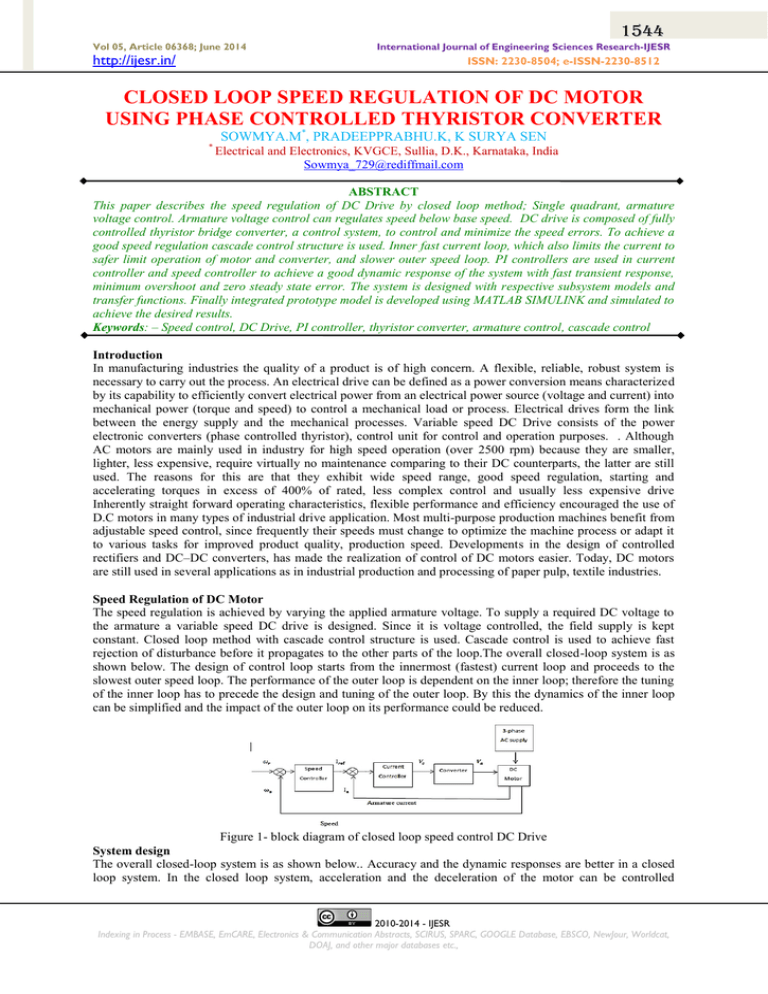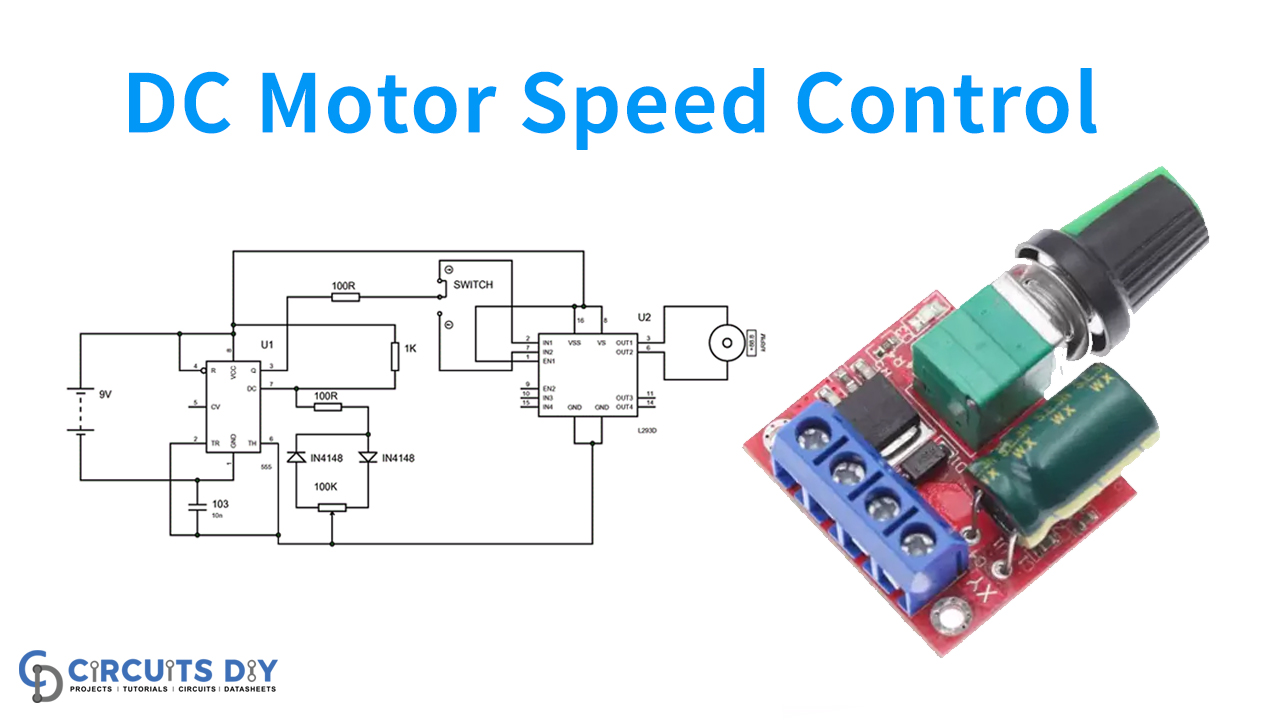Speed Regulation Of Dc Motor
Speed Regulation of DC Motor
DC motors are widely used in various applications, ranging from industrial machinery to robotics. One crucial aspect of using a DC motor effectively is its speed regulation. The ability to control and maintain a desired speed is essential for achieving optimal performance and efficiency. In this article, we will explore the concept of speed regulation in DC motors, its importance, and the various methods used for achieving it.
Understanding Speed Regulation
Speed regulation refers to the capability of a DC motor to maintain a desired speed under changing load conditions. In simple terms, it is the motor's ability to compensate for variations in the applied load and keep the speed relatively constant. An efficiently regulated DC motor ensures smooth operation, prevents damage due to excessive speed or torque, and guarantees accurate control in various applications.

Image source: Electrical4U
There are several factors that can potentially affect the speed of a DC motor. These include changes in the supply voltage, variations in the mechanical load, and alterations in the motor's internal parameters. Speed regulation mechanisms aim to compensate for these factors and maintain the desired operating speed.
Methods for Speed Regulation
1. Armature Voltage Control:
The most commonly used method for speed regulation in DC motors is armature voltage control. This technique involves varying the voltage applied to the motor's armature winding. By increasing or decreasing the armature voltage, the motor's speed can be adjusted accordingly. Higher voltage leads to higher speed, while lower voltage results in reduced speed. This method provides a simple form of speed control but may not be suitable for precise applications where accurate speed regulation is required.

Image source: Circuits DIY
2. Field Flux Control:
In some cases, speed regulation can be achieved by varying the field flux of the DC motor. By adjusting the current flowing through the motor's field winding, the magnetic field strength can be controlled, resulting in changes in the motor's speed. However, this method is less commonly used compared to armature voltage control and is typically employed in specialized applications.
3. Pulse Width Modulation (PWM):
Pulse Width Modulation is a widely used technique for speed regulation in DC motors. In this method, the average voltage supplied to the motor is varied by rapidly switching the supply voltage on and off. By adjusting the width of the on and off cycles, the effective voltage delivered to the motor can be controlled, thereby managing the motor's speed. PWM offers precise speed control and is commonly used in applications requiring accurate and efficient speed regulation.
Listicle: 3 Effective Tips for DC Motor Speed Regulation
Here are three effective tips for achieving optimal speed regulation in DC motors:
1. Use a Closed-Loop Control System
Implementing a closed-loop control system, where the actual speed of the motor is continuously monitored and compared to the desired speed, can greatly enhance speed regulation. By incorporating sensors and feedback mechanisms, the control system can make real-time adjustments to the motor's input voltage or field flux, ensuring the desired speed is maintained even under changing load conditions.
2. Employ PID Control Algorithm
Utilizing a PID (Proportional-Integral-Derivative) control algorithm can further improve the speed regulation of DC motors. A PID controller adjusts the motor's control variables based on error signals, which represent the difference between the desired speed and the actual speed. By continuously optimizing the control variables, the PID controller achieves precise and stable speed regulation, minimizing speed deviations and ensuring smooth motor operation.
3. Optimize Motor Mechanical Design
The mechanical design of the DC motor can significantly influence its speed regulation capabilities. Factors such as rotor weight, bearing selection, and frictional losses can impact the motor's response to load changes. By optimizing these design parameters, manufacturers can enhance the motor's speed regulation characteristics, allowing it to maintain a steady speed and improve overall performance.
FAQs (Frequently Asked Questions)
Q: Can I use armature voltage control for precise speed regulation?
A: While armature voltage control offers a simple way to adjust the speed of a DC motor, it may not provide the necessary precision required for some applications. For precise speed regulation, it is recommended to implement closed-loop control systems with feedback mechanisms.
Q: Is speed regulation important for all DC motor applications?
A: Speed regulation is crucial for applications where maintaining a constant and accurate speed is essential. However, there are scenarios where speed regulation may not be as critical, such as in simple fan motors or certain low-demand applications.
Q: What are the advantages of using PWM for speed regulation?
A: Pulse Width Modulation offers several advantages for speed regulation, including precise control over the motor's speed, efficient power usage, reduced motor heating, and improved overall performance. It is widely used in applications such as robotics, automation, and motor control systems.
By understanding the concept of speed regulation in DC motors and implementing effective control strategies, engineers and enthusiasts can ensure the smooth and efficient operation of their motor-driven systems. Whether it's for industrial machinery or robotic applications, precise speed regulation plays a vital role in achieving optimal performance and reliability.
Speed Regulation Of DC Motor | Electrical4U
 Image Source : www.electrical4u.com
Image Source : www.electrical4u.com speed regulation motor dc electrical4u equation given
CLOSED LOOP SPEED REGULATION OF DC MOTOR USING
 Image Source : studylib.net
Image Source : studylib.net Combine Ordem Alfabética Pelo Visto Dc Motor Resistance Calculation
 Image Source : ironislandmuseum.com
Image Source : ironislandmuseum.com Speed Regulation Of DC Motor | Electrical4U
 Image Source : www.electrical4u.com
Image Source : www.electrical4u.com regulation electrical4u
DC Motor Speed Control Circuit
 Image Source : www.circuits-diy.com
Image Source : www.circuits-diy.com Speed Regulation Of DC Motor - Circuit Globe
 Image Source : circuitglobe.com
Image Source : circuitglobe.com regulation speed motor dc equation load respect given shown between below where
CCMHCN 6V - 90V Speed Regulation Of DC Motor - Ceneo.pl
 Image Source : www.ceneo.pl
Image Source : www.ceneo.pl 6v 90v
[$11.07] 12V DC Motor 30W High Speed Motor 24V Speed Regulation Motor
![[$11.07] 12V DC Motor 30W High Speed Motor 24V Speed Regulation Motor](https://g-search3.alicdn.com/img/bao/uploaded/i4/i4/192897160/O1CN01wQag1q22lKJ3jmX7o_!!0-item_pic.jpg) Image Source : www.newbecca.com
Image Source : www.newbecca.com Speed regulation of dc motor. Speed regulation of dc motor. Combine ordem alfabética pelo visto dc motor resistance calculation. [$11.07] 12v dc motor 30w high speed motor 24v speed regulation motor. Regulation electrical4u